
Purpose This study aims to suggest the application of IoT-based integrated management system to public sports facilities(PSF) in order to improve the utilization and management of PSF by analyzing the actual state of PSF empirically. Methods A survey was administered to managers(n=279) and users(n=500) of PSF in order to identify problems of current management and collect suggestions for improving the utilization and management of PSF. Previous research on establishing IoT-based system was also reviewed for considering the effectiveness of IoT technology. Results Generally, PSF are in low utilization and operate in a deficit. The deficit operation is caused by high labor costs and management expenses. The survey result shows that there are many problems in management and utilization such as lack of equipment, deteriorated facilities, shortage of manpower and funding, limited programs, difficulties in promotion. The result also shows that PSF need to consider developing local demand-based programs, reducing management costs, extending opening hours, improving online booking system. Conclusion To solve the problems of PSF in utilization and management, this study suggests that IoT-based integrated management system needs to be applied to PSF. It is expected that applying IoT-based integrated management system to PSF would improve operational effectiveness, ease of facility management, and user convenience.


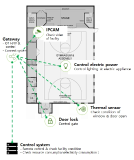
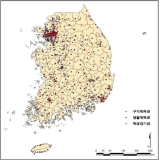
Based on public sports facilities’ census data, this study attempts to empirically analyze to the factors affecting the operating balance and use of public sports facilities(PSF). Analysis was carried out through multiple regression analysis using SPSS and location characteristics analysis using GIS. The total floor area and population was confirmed to influence operating balance and use(DV). Management body influence differed for DV (use and operating balance of PSF) by type of PSF. Consequently, this requires diversification of the management body. The size of facilities and location characteristics(population and zoning) are positive effect on the operating balance and Use of PSF. In order to solve the problem of location restriction and security of marketability, it is possible to take into account the integrated management and sports club’s use of large-scale sports facilities.

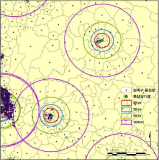
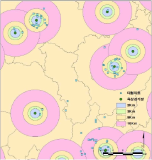

Purpose This study attempted to investigate the difference on job satisfaction and service quality between non-regular and regular workers in commercial sports facilities. Methods With the purpose of the study, the purposive sampling as the non-probability sampling method was used to intentionally select the representative cases. We conducted through utilizing in-depth interviews with 6 non-regular and regular workers, respectively, who have worked for more than a year at total commercial sports facilities holding more than 3 programs with more than 500 memberships. This study aimed to explain real phenomena as much as possible by utilizing NVivo 11, one of qualitative research method programs, on the basis of raw data. Results In conclusion, non-regular and regular employment types in commercial sports facilities did not affect service quality provided for customers. However, it was derived that there was a slight difference between regular and non-regular workers on job satisfaction. Conclusion It is necessary to improve the wage and compensation system for regular workers as well as the labor policy to improve treatment of the wage according to the qualification of non-regular workers in commercial sports facilities. In spite of the instability of non-regular workers, the effort of converting into regular workers would evoke organizational commitment, loyalty, and attachment of non-regular workers, when properly acknowledged.






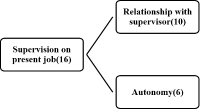
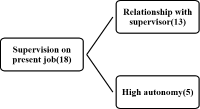









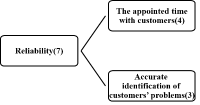





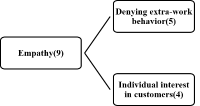
Purpose This study focuses on accessibility to sports facilities that can be classified into structural leisure constraints. The purpose of this study is to explore exploratory analysis of the types of reservation methods and payment methods, which are the initial stages of consuming sports facilities, and to explore inconveniences that consumers feel when making reservations. Methods A quantitative research method was used to derive the results, and data were collected through a questionnaire survey method. The collected data were analyzed by technical statistics focusing on the reservation method, payment method, and inconvenience during reservation. Results As a result, it was found that the main types of reservation methods and payment methods were homepage, homepage/telephone, telephone, homepage/app, and account transfer and card payment, respectively. In the case of inconvenience, the procedure was complicated, address and location, and reservation method were identified as the main matters. Conclusions Efforts must be made to secure both the convenience and publicity of accessibility at an early stage, such as reservation methods and payment methods for sports facilities.
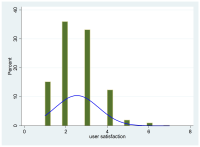
Purpose The study aims to analyze the factors affecting the Residents user satisfaction in order to improve the management of the Open School Sports Center the support facility of the National Sports Promotion Fund. Methods This data is based on Korea Institute of Sports Science(KISS)'s Open School Sports Center Usage Status and Satisfaction Survey (2016) and Open School Sports Center use performance. The analysis model is a regression model (TOBIT) that takes into account the limited characteristics of dependent variables. Results The results are as follows: the satisfaction is negatively related age, number of regulations, weekday opening hours, and usage fees. Conclusion Therefore, in order to increase the satisfaction of Open School Sports Center residents users, various supports are needed. This includes funds for PR, discounts and user-friendliness. It also requires differentiated management of each Center. In the case of regions and facilities, consumer-oriented policies need to be applied instead of collective standards.

Purpose The purpose of this study is to examine the elite sport system in Germany by selecting six keyword. Methods In order to review the literature, we reviewed the reports of sports organizations such as the Ministry of the Interior, the Olympic Games of Germany, the Sports Council of Germany, and the German sports policy, history, business, programs and financial status. Conclusion In Germany, athletic associations were created in the 40s and 50s and strengthened infrastructure, projects, and workforce infrastructure by the 60s and 90s. Through its long history and tradition, Germany is at the forefront of both the Winter and Sommer Olympics. Among them, the German Olympic Sports Federation, researchers Institute, Olympic training centers, Sports School, Kader-systems and federal police·military·customs are the main keyword of elite sports. In order to support the national players in Germany, the regional Olympic training center supports sports science, sports gymnasium, sports athletic high school, sports elite school, athletes' house are operated for selection and training of excellent athletes. And all the players are in the carder system and there is a system that allows them to enter the federal police, soldiers and customs so that they can support the human resources, facilities and programs as well as train and work at the same time.
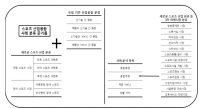
With coming industrial convergence era, there are the necessity of industrial convergence in sport industry. Therefore, the purpose of this study is to provide classification system and trend. This study applied case study method with semi-constructed interview, integrative literature review and observation. In addition, this study provide the conceptual framework for the classification system in sport industry related to industrial convergence. To conclusion, among the several criteria related to industrial convergence for product-new technology criterion, there are virtual sports, diagnosis valuation solution and exercise guide solution for participant sport market. In the case of new technology-service criterion, there are new media and virtual broadcasting for spectator sport market, and u-learning for participant sport market. For product-service criterion, there are complexity of sports facility and sportainment for spectator sport market, and virtual gaming sports and participatory tour for spectator and participant sport market. In addition, the trend of the sport industrial convergence has changed from leading media industry to converging with diverse industry areas.

[Purpose] This study aims to examine the research trends in Korean women’s sport history and provide suggestions for future research by reviewing journal articles conducted in the last ten years (2007-2016). [Methods] The articles were selected from the Korean Journal of History for Physical Education, Sport, and Dance, which is the only, representative sport history journal in South Korea. 66 articles identified as studies of women’s (or women-related) sport history were analyzed in five categories, including a) period, b) theme/topic, c) purpose, d) method, and e) country. [Results] Specifically, the analysis by period showed that 90% of the research focused on modern and contemporary history, while only 7% of the research was set in pre-modern history. According to the analysis by theme/topic, genre has been studied most often with 36%, followed by figure (20%) and facility/institution/organization (15%). By the criteria of purpose, it was found that the majority of the research (48%) focused on historical evolution and transition, while the research on comparison/relation was of little scholarly interest. Regarding the category of method, textual analysis was used most often, with 70% followed by oral life history (27%). By the criteria of country, the largest ratio of papers studied Korea (75%) while only 3% of studies examined other East Asian countries, such as China or Japan. Comparative, diasporic, or transnational studies were the second most popular subcategory (11%). [Conclusion] According to the results, it was acknowledged that there has been a significant lack of interest in women’s sport history by Korean scholars and “sport herstory” is largely underresearched. In addition, the excessive concentration on a specific period or a particular theme was also exposed. To rectify the biased research practice and promote scholarly growth and enhancement in both academia of Korean women’s sport history and Korean sport history, it is necessary to consider the expansion of historical materials, application of new methodology, cross-disciplinary conversation, and theorization in studying women’s sporting experiences.
PURPOSE This study was to examine safety awareness of sports among university students. METHODS Total 1950 university students of 9 regions responded to questionnaires on safety awareness of sports with using simple random sampling. The date were analyzed by frequency analysis and Two-way ANOVA. RESULTS The results of this study werew as follows: Fistly, male students were experienced safety awareness education more than female students. In addition, the education of safety awareness of sports took place in sports field, but most of students did not aware of safety personnel. Secondly, university students thought that sports was not safe because sports facilities and equipments were not managed and they were worn out. Thirdly, they perceived sports safety was managed generally normal. Furthermore, they perceived the aging of facilities and equipments at sports sites was major factor in the occurrence of safety accidents. In order to reduce sports safety accidents, it is necessary to facilitate safety education of sports at government. CONCLUSIONS The results of this study will be used as fundamental information to raise safety awareness in university students and to establish safe sports culture.

This paper focuses on the analysis of growth policies in the sport industry and the suggestions of the owned demand-pull growth model. The Korean government have enforced the supply-oriented growth policy in the sport industry. However, when the demand for sport is low and inelastic, the supply-oriented growth policy could be less effective. When the supply-oriented growth policy is based on the demand-pull growth policy, the growth policy in the sport industry could be more effective. Concretely, if the government carries out the introduction of sport voucher system, the enlargement of public and private sport facility use, the development of fused policies linked with sport-health-welfare, etc., the sport industry will be advanced more rapidly.

